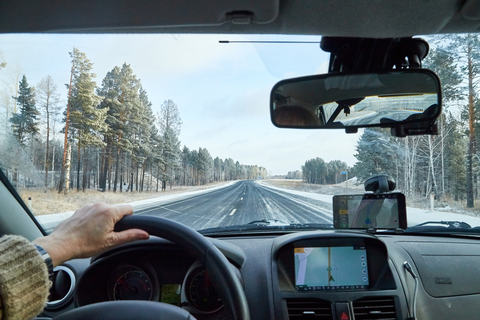Winter schools designed for drivers of all levels

The way most people learn how to drive in wintery conditions is by accident. Unfortunately, that can create some misperceptions about the best way to handle your vehicle on icy or wet roads.
So says Mark Cox of the Bridgestone Winter Driving School.
"Just because you've been driving winter roads for 30 years doesn't mean you're any good at it," Cox said. "Winter safety courses are designed for everyone-from new drivers and salesmen to professional racers and emergency response crews."
Most drivers have learned through experience some basic ideas about winter driving. Some of the ways people learned years ago no longer apply with today's modern vehicles.
"Trial and error on a public road puts you and your passengers at risk," Cox said. "A winter driving school gives you a safe way to practice skills that can save your life and avoid injury."
For instance, drivers traditionally have been told to pump the brakes when their vehicle begins to slide on a wet or icy road. The pulsating motion allows wheels and tires to grip the road better.
Yet, modern vehicles contain antilock brake systems that automatically pulsate when the pedal is pushed and held down.
"A car is a big tool with lots of technology to assist the driver," Cox said. "An emergency situation is the wrong time to find out which techniques work and which don't."
The types of courses and offerings vary dramatically, Cox said. Some schools offer classroom-only instruction. Other schools provide a track with icy or wet surfaces, banked turns and other conditions found on public roads.
"Structured exercises give you real-world experience you can actually use in daily driving," Cox said. "It's like a sport where you can benefit from professional coaching. You'll learn techniques that help you drive better."
For example, weight transfer is an important skill for winter driving. By using the vehicle's size at the right time, drivers can negotiate a variety of winter conditions.
What should drivers look for when selecting a winter driving school? Cox had the following recommendations:
- Look for schools with the kind of training you need. Some schools teach general winter driving while others specialize in areas such as military driving on mountainous roads.
- Does the school provide a safe but real-world course for training? You may get stuck in a classroom. Make sure the class also puts you behind the wheel.
- What kind of experience do instructors offer? There is no national certification program for school instructors. Instructors run the gamut from former race-car drivers to part-time trainers with little or no motorsports background.
- What equipment does the school provide, if any? Quality driving schools provide well-maintained vehicles for training that won't break down as soon as the class begins. One side benefit: You can get a chance to test drive a particular vehicle.
- What types of terrain are available? Diverse conditions can give you an opportunity to practice a variety of real-world scenarios.
- Find out how much time you spend on the track versus in the classroom. You can watch all of the films you want, but it won't improve your hand-eye coordination.
- Compare pricing, quality and availability. Rates and course time vary dramatically. Some courses may require you to schedule weeks in advance.
- Practice your newly learned skills in daily driving. It's a great way to prepare for emergencies and develop "muscle memory."
"The approaches and goals are different at every winter driving school," Cox said. "Arrive with an open mind and you will gain a lot of practical experience."